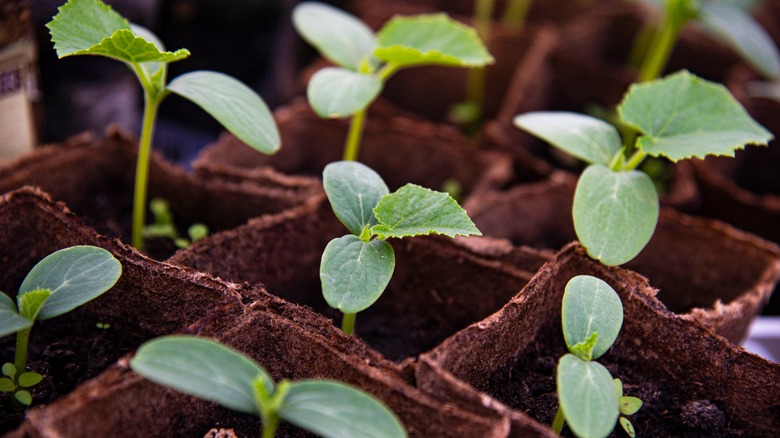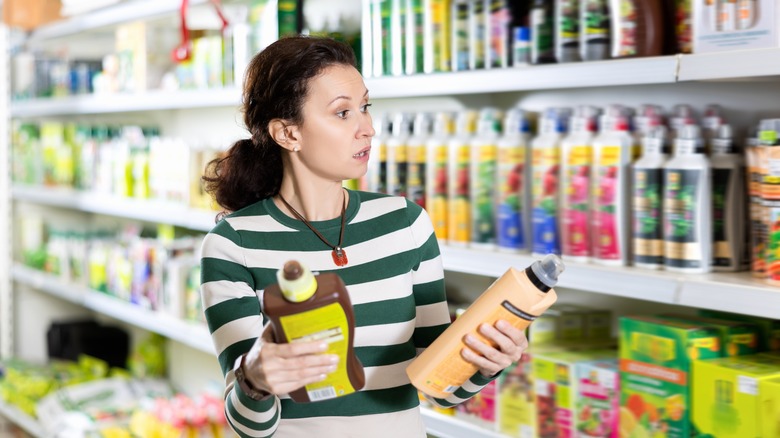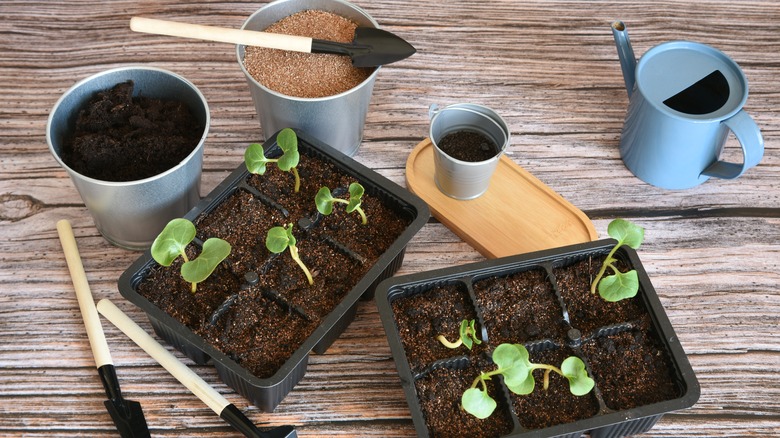How To Choose The Best Fertilizer To Use On Your Young Seedlings
Many gardeners believe that it's not necessary to fertilize young seedlings. While this is quite true if you pot them quickly, you have to remember that if you're using commercial seed-starting mix, it won't contain any nutrients. This is also true if you make your own seed-raising mix when you start seeds indoors. By the time the seeds have germinated and are ready to produce their first leaves, they will have run out of nutrients, and the young plants now need to draw the nutrients necessary for healthy growth from the soil or medium they're growing in. This means the young plants will benefit from some addition of fertilizer, but you do have to be careful to choose the right one.
If you use the incorrect fertilizer, you may end up burning the tender young roots and leaves. Thankfully, selecting the right fertilizer is not that difficult: It needs to be suitable for indoor plants and contain the right concentrations of nitrogen, phosphorus, and potassium. Here's more about what to look for, as well as how and when to fertilize your young seedlings.
Choosing the best fertilizer for young seedlings
The first thing you want to remember is to only fertilize your young seedlings gently and with a diluted dose. While the seedlings are still quite tender, high concentrations of fertilizer will burn the young roots and damage your plants. For this reason, a liquid fertilizer that has been diluted to quarter strength should work fine. This is because liquid fertilizers are taken up by the plant immediately and any excess is washed out of the growing medium when you water your plants.
You also want to select a fertilizer that has fairly low but even concentrations of nitrogen, phosphorus, and potassium (NPK). This is often referred to as a balanced fertilizer. The percentages of these nutrients are stated on the package in a series of three numbers, correlating to the NPK in the formulation. Look for a fertilizer that's recommended for indoor plants, because this will work well for young seedlings, as long as you dilute it and only use it at quarter strength. Fish emulsion fertilizer is a good choice, because it is relatively balanced and the nutrient concentrations aren't too high. It's also one of the soil ingredients you should use in a raised garden bed. When applying the liquid fertilizer, make sure that you wash off any that may have ended up on the foliage, because this could damage the young plants.
When should you start fertilizing your young seedlings?
Ideally, you want to start fertilizing your young seedlings around two weeks after they've germinated, or when the seed leaves or cotyledons are starting to open. At this stage, you want to dilute the fertilizer to quarter strength. Once you see the first set of true leaves appear, you can now apply the liquid fertilizer at half strength. You can continue applying this dosage around every seven to 10 days until the seedlings are ready to transplant into the garden or into larger pots with a nutrient-rich potting soil.
Providing your young seedlings with enough nutrients for healthy growth will ensure that they thrive and grow a strong root system. But, make sure that the plants get plenty of light so that they don't become too leggy. You also want to stop fertilizing your seedlings at least a week before you plant them into the garden, because this will help to harden them off. Once the seedlings are planted in the garden, it's important to consider the nutrient content in the soil before you start fertilizing your seedlings again. For example, if you've added a lot of compost to the soil before planting, you probably won't need to add any additional fertilizer until the plants begin reaching maturity and are ready to start producing their harvest.


